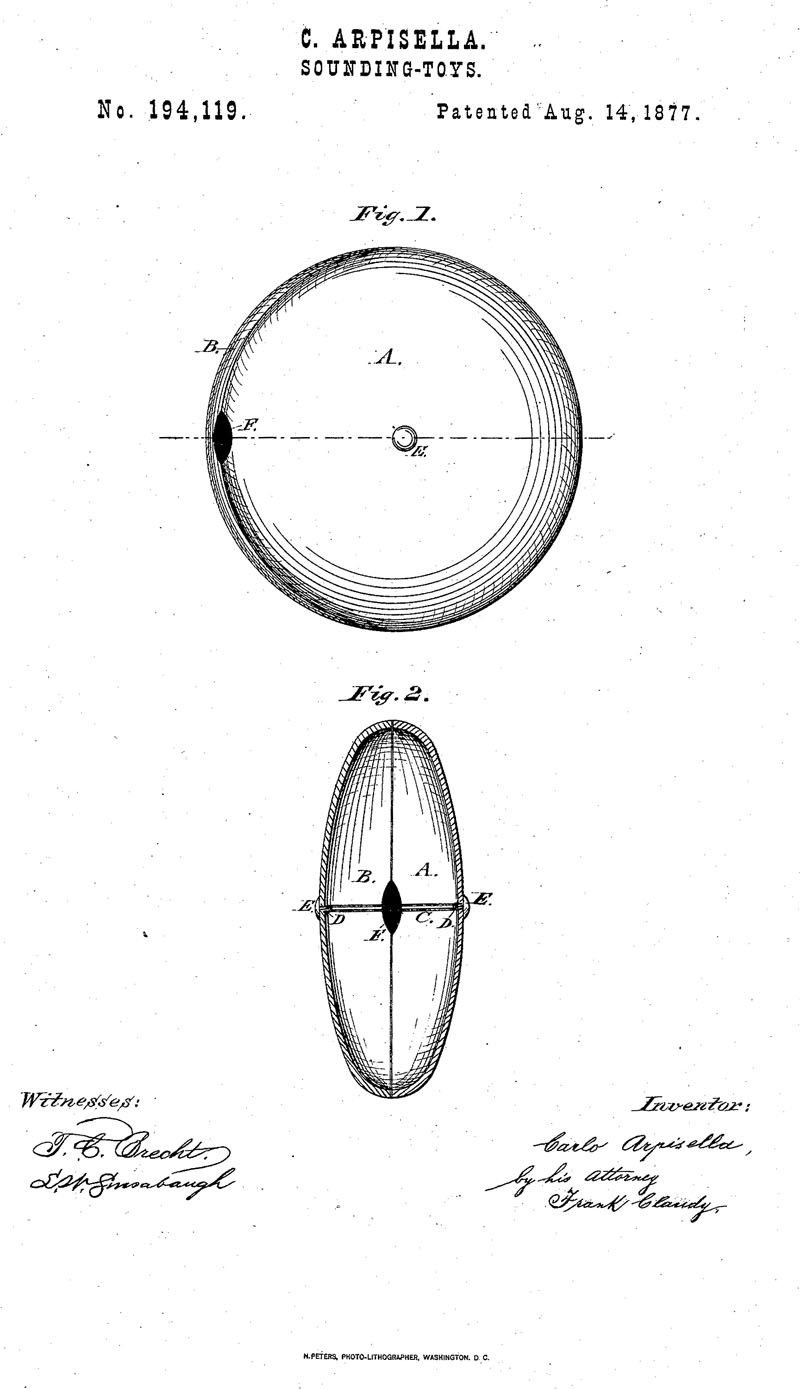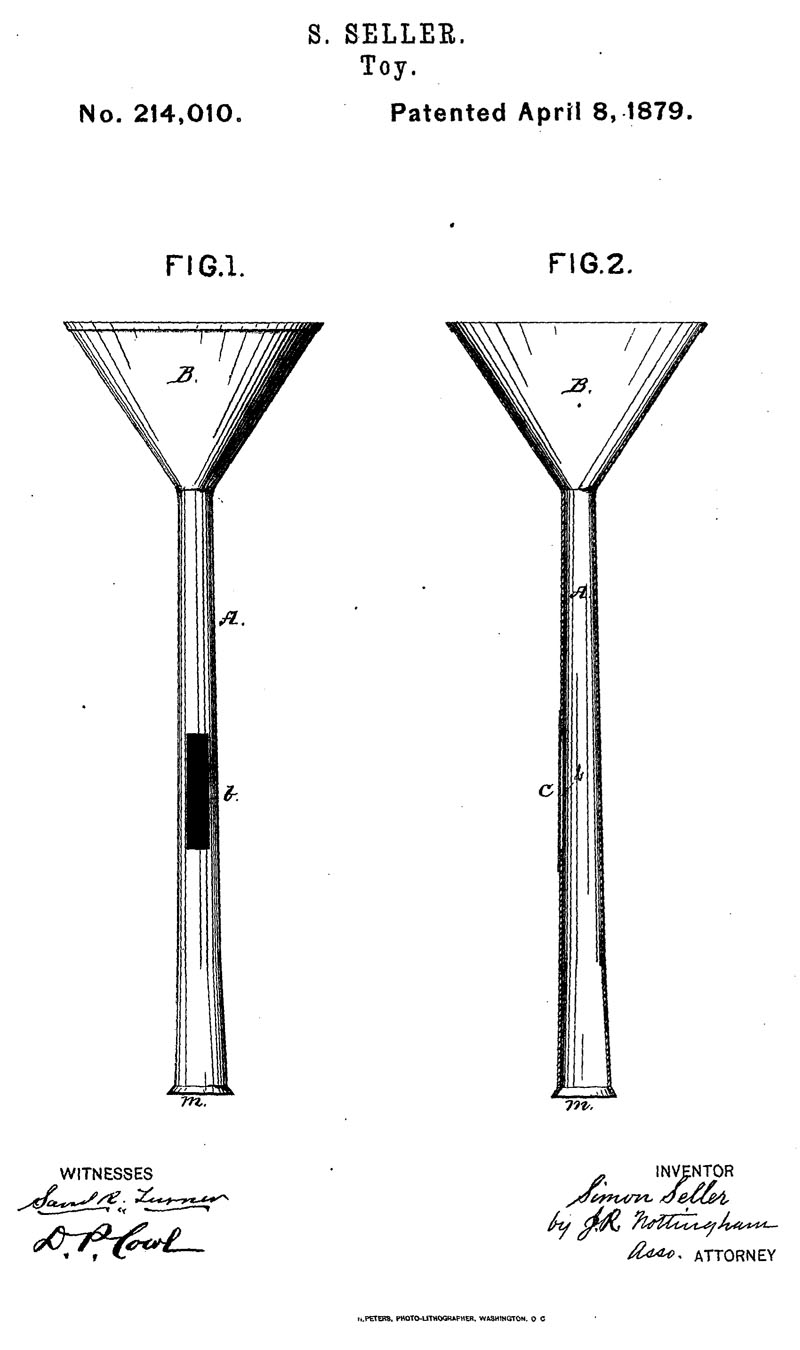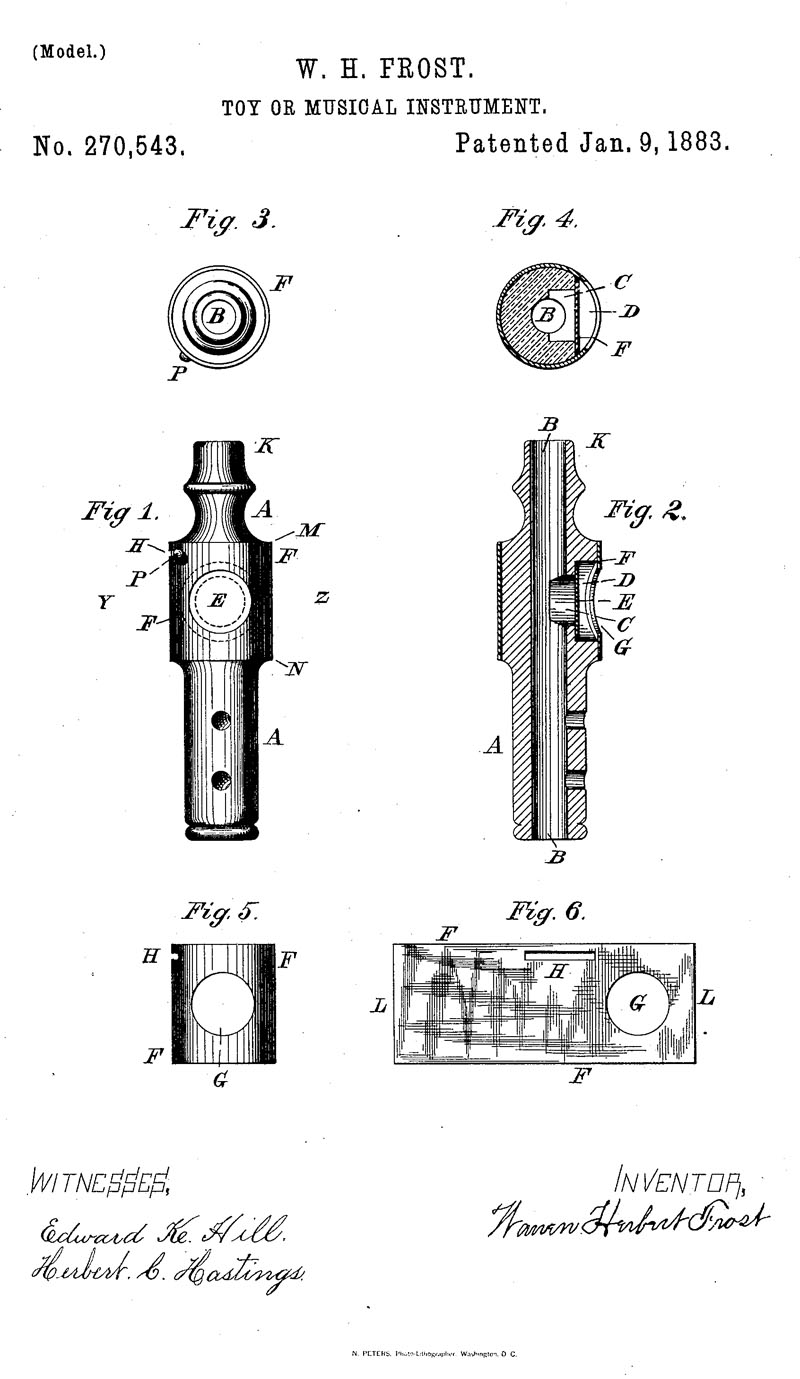
History of The Kazoo Through Patents
Part I--The First Kazoo
Read
across ====>
Click on number to go to that patent pdf.
|
Kazoologist Home What Is a Kazoo? History of the Kazoo Join AAK Kazoo Design, Construction, &Maintenance Pictures Links |
It opperates
like a kazoo, in that the sound of the player's voice (which is
amplified and distorted) controls the pitch, |
This is the
first patent I have found for a kazoo type membranophone. It
consisted of a metal tube and funnel shaped bell. |
The First Kazoo In the text of the patent he refers to it as "This instrument or toy, to which I propose to give the name 'kazoo' ". So far I have found nothing that indicates why he chose the name kazoo. This first kazoo was not the familiar 'submarine' shape. |
The second of Mr. Frost's patents was an improvement on the first kazoo, but was not referred to as a kazoo, although it is basically the same shape. This one was assigned to George D. Smith (more about him later). |
1896__US552612
Mr. Frost's third patent is for the instrument sold as the “Zobo” or “Zobo Horn”. Bands of boys or adults equipped with Zobos where popular in the late 1890s and early 1900s. The main difference between this and the first two being the diaphragm is perpendicular to the body of the instrument and the flow of sound, and the membrane is mounted on a rigid removable ring.The main difference between the first two and this is the diaphragm is perpendicular to the body of the instrument and the flow of sound, rather than parallel and the membrane is mounted on a rigid removable ring. |




